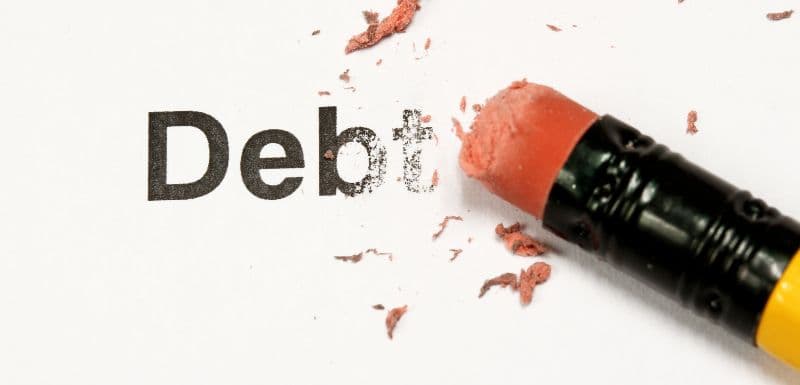Debt Repayment: Debt Snowball vs. Debt Avalanche Methods

Debt can be a double-edged sword. It can be a boon or a bane, depending on the purpose for which it is used and how it repaid. It is a boon when debt is taken for meeting important financial goals like buying a house and regularly paying the EMIs.
However, when someone uses credit cards for unnecessary expenses and is unable to pay the monthly bill, it can put them in a debt trap. In this article, we will understand how to clear debts fast using various strategies.
Debt Repayment Methods
Are you currently caught in a debt trap and wondering how to get out of debt? If yes, there are some debt repayment methods that you can consider to come out of debt. Each method has its pros and cons. As each person’s situation is different, no single method is the best. Each person can choose a strategy that best suits their requirement. We will discuss two of them as they are most widely used. These are the snowball method and the avalanche method.
What Is the Debt Snowball Method?
In the debt snowball method, an individual starts paying off the loan with the smallest outstanding amount. Once the smallest loan is paid off, the individual can move to the next smallest loan. The repayment increases as the individual moves from one loan to another. In other words, the repayment amount snowballs.
Also, as the repayment amount gets bigger and bigger, the outstanding amount gets reduced at an accelerated rate. The process continues till all the outstanding loans are repaid.
With the snowball method, you can pay the smallest loans quickly. With every small loan that gets repaid fully, you can tick it off from your outstanding loans list. Every loan paid off is a victory and a step ahead in the journey to becoming debt-free.
Now that we understand what is the snowball method, let us look at what is the avalanche method.
What Is the Debt Avalanche Method?
In the debt avalanche method, an individual starts by paying off the loan with the highest interest rate. Once the loan with the highest interest rate is paid off, the individual can move to the next loan with the highest interest rate.
As the individual moves from one loan to another, the interest burden goes on reducing as high-cost loans are repaid. The process continues till all the outstanding loans are repaid.
The debt avalanche method is helpful for loans like credit cards and personal loans with a high interest rate. For example, most banks charge an interest rate of 3.0% to 3.5% per month (36% to 42% per annum) on credit cards. It makes them one of the most expensive loans in the world. If the credit card outstanding amount is high and it is not repaid quickly, it can become unsustainable. Hence, using the avalanche method for credit card outstanding can be effective.
Debt Snowball vs Debt Avalanche – What’s the Difference?
|
Debt Snowball Method |
Debt Avalanche Method |
|
The method focuses on paying the smallest loan first. |
The method focuses on paying the highest interest rate loan first. |
|
The borrower lists the loans in the order of smallest to largest for repayment. |
The borrower lists the loans in the order of highest to lowest interest rate for repayment. |
|
After paying the minimum amount due on all loans, the remaining amount is used to pay the smallest loan. |
After paying the minimum amount due on all loans, the remaining amount is used to pay the loan with the highest interest rate. |
|
Gives small victories in the short run to keep the borrower motivated. |
Saves interest amount in the long run to keep the borrower motivated. |
Effective Debt Repayment Strategies to Pay off Debts Faster
Let us see how to use the snowball strategy to pay off debt:
- Make a list of all the outstanding loans, with the smallest to the highest amount.
- Pay the minimum amount due for all the loans.
- With the amount left, select the loan with the smallest outstanding amount and pay it.
- If you have more money, go for the next loan with the smallest outstanding amount.
- Continue this process every month till you repay all the outstanding loans.
Let us see how to use the avalanche strategy to pay off debt:
- .Make a list of all the outstanding loans, with the highest to the lowest interest rate.
- Pay the minimum amount due for all the loans.
- With the amount left, select the loan with the highest interest rate and pay it.
- If you have more money, go for the next loan with the highest interest rate.
- Continue this process every month till you repay all the outstanding loans.
Create a Budget
Budgeting helps you allocate your income towards expenses, savings and investments. You can use a budgeting method like the 50/30/20 budgeting to make a provision for debt repayment every month. Within the 50% bucket, along with needs, you can make a provision for the payment of the minimum amount due on credit cards and/or regular EMI for other loans. In the 20% bucket, along with other savings and investments, you can make a provision for additional money towards the repayment of credit cards outstanding/loans, whether using the snowball or avalanche debt method.
With budgeting, within the 30% bucket, you can track where the money is being spent. These being discretionary spends, you can check where you can cut down and save money that can be redirected towards debt repayment.
Becoming Debt-Free
If you have multiple loans to be repaid and the cumulative amount is high, it may take some time to become debt-free. With the snowball method, every loan you close quickly will keep you motivated. With the avalanche method, you will save on the interest in the long run. Whatever debt repayment method you choose, the key is to persist with it till you achieve your goal. When you are determined and stay focused on the objective, you will surely achieve it, even though it may take some time. It will not happen in one day, but it will definitely happen one day. Once you repay all the outstanding loans, you will become debt-free and have the much-needed peace of mind.
FAQs
Why Is It Called the Snowball Method?
It can be compared to a snowball, which, when it starts, is small. As it moves down the hill, it gathers more snow on its way and keeps getting bigger and bigger. At the same time, the rate at which it moves accelerates. Hence, this strategy of loan repayment is known as the snowball method.
For Which Types of Debts Is the Avalanche Method Preferable?
The debt avalanche method is helpful for loans like credit cards and personal loans with a high interest rate.
Can You Use a Combination of Both Methods?
Yes. For some loans, you can use a combination of both strategies. For example, if a loan has a higher interest rate and a smaller outstanding amount, you can repay it and finish it.
Your Investing Experts
Relevant Articles
FinEdge’s 'DiA' Wins ET BFSI FinNext 2025 Award for Innovative Wealth Planning
Dreams into Action (DiA), FinEdge’s proprietary bionic investing platform, has been recognised as the winner in the Innovative Wealth Planning Tools category at the ET BFSI FinNext Awards 2025. This award celebrates not just technology, but purposeful innovation that improves outcomes for investors. Here’s what DiA was built to solve, why it works, and why this recognition matters.
Budget 2024: Change in LTCG Taxation on International Funds – Should You Consider Investing?
In the July 2024 Budget, the Finance Minister announced changes in the Long Term Capital Gain (LTCG) taxation for some asset classes. These include equity fund of funds (FoFs), international equity FoFs, gold mutual funds, etc. Earlier, these were subject to taxation at the individual’s slab rate due to a change in the taxation of debt mutual funds in the previous budget. After the recent LTCG changes, the appeal of these asset classes has increased. In this article, we will understand what international equity mutual funds are, their features, how they are taxed, and whether you should invest in them.
Why Should You Plan for Your Child’s Higher Education?
It is August 2024, and by now, you must have paid the annual school fees for your child for the academic year 2024-25. You must have noticed that the school may have increased the fees compared to last year to counter the impact of inflation. The same holds true for your child's higher education. The cost of education will increase with every passing year, and by the time it is time for your child to take admission to college, the education cost will have increased substantially.



